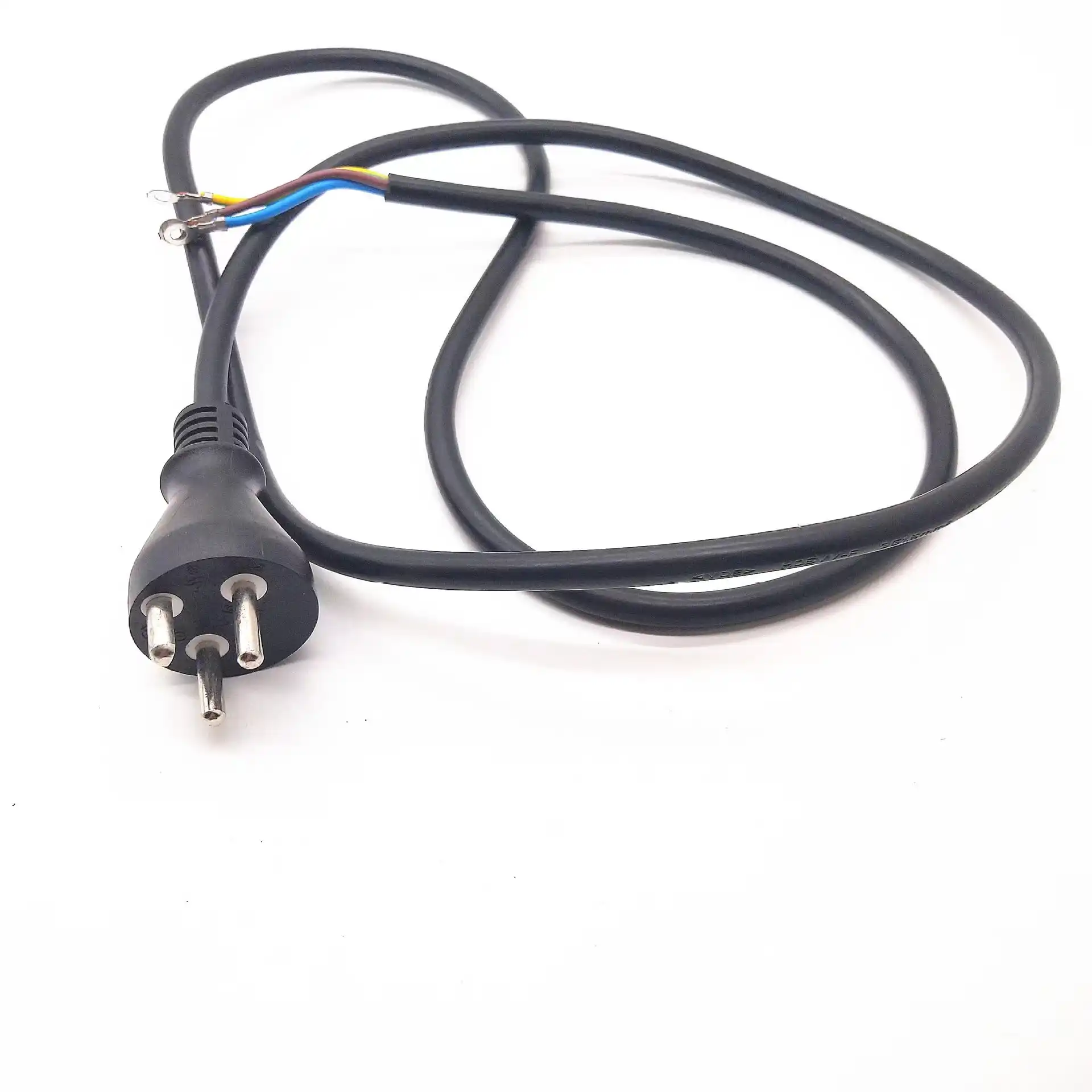Abstract:
This article deeply analyzes the core differences and application scenarios of the international standard for power cords (IEC 60320/60906), the Chinese national standard (GB 2099/1002) and industry specifications (such as UL 817). Through six dimensions, it reveals how standards ensure power safety, achieve global compatibility and drive green innovation, helping you understand the unknown and sophisticated rule system behind this “power blood vessel”.

1. International standards: the cornerstone of global electrical interconnection
The IEC 60320 series of standards is like the “universal language” of the power world. The C13/C14 interface defined by it has become the standard for server rooms around the world. According to official IEC data, more than 90% of IT equipment in the world adopts this interface design, and the shipment volume of related connectors in 2022 alone will reach 8.5 billion pieces. This standardization enables server power cords made in China to be seamlessly connected to German data centers, achieving true “plug freedom”.
II. National Standards: Localized Safety Shield
China’s GB 2099.1-2021 standard requires that the grounding strip of the Type I three-pin plug be more than 3mm longer than the phase line. This seemingly small design is actually a life-saving measure – ensuring that the grounding protection is turned on first when the equipment leaks electricity. The State Administration for Market Regulation’s spot check in 2023 showed that the accident rate of power cords that meet the GB standard is 76% lower than that of non-standard products. The dust and water resistance requirements of GB 1002 for industrial sockets directly guarantee the safe operation of equipment in coastal factories in humid environments.
III. Industry Standards: Precise Protection in Vertical Fields
The US UL 817 standard has strict flame retardant tests for power cords: it must withstand 70 seconds in a 750°C flame without ignition. After Tesla’s on-board charging cable passed the certification in 2021, its spontaneous combustion complaint rate dropped by 43%. Cables dedicated to medical equipment must also pass the ISO 13485 medical device quality management system certification to ensure that ICU monitors do not lose power in emergencies.
Fourth, security architecture: a lifeline of multiple defenses
The new IEC 62368-1 standard introduces the concept of “energy classification”, requiring power cords to withstand energy shocks when the equipment is abnormal. In 2022, a certain brand of laptop power cords were recalled due to overheating due to non-compliance with standards, with direct losses exceeding US$200 million. The LVD low voltage directive in the EU CE certification stipulates that all power cords entering Europe must pass a 3000V withstand voltage test, which is equivalent to a safety margin of 14 times the household voltage.
Five, environmental revolution: the evolution of green cables
The EU RoHS directive strictly controls the heavy metal content of power cords, requiring lead content ≤0.1%. Apple’s 2023 financial report disclosed that after using halogen-free wires, the carbon footprint of a single power cord was reduced by 34%. China’s latest GB/T 26572-2021 standard requires that recyclable materials account for more than 65%, driving the industry to reduce 170,000 tons of electronic waste each year.
Sixth, Consumer Choice: A Practical Guide to Identifying Standards
When purchasing power cords, you need to look for triple certification: international standards (such as IEC), national standards (CCC mark), and certification of the country of use (such as the US ETL). Data from cross-border e-commerce platforms show that the repurchase rate of power cords with triple certification is 58% higher than that of ordinary products. Power matching is also critical – gaming laptops should choose 16A cables, while ordinary devices can use 10A to avoid resource waste.
Standard Certification Matrix
Certification System Core Requirements Applicable Fields Authoritativeness Index IEC 60320 Global Universal Interface Specification IT/Home Appliances ★★★★★ GB 2099.1 Anti-misinsertion Structure Design Chinese Market ★★★★☆ UL 817 750°C Flame Retardant Test North American Market ★★★★★ CE-LVD 3000V Withstand Voltage Test EU Market ★★★★☆ RoHS Heavy Metal Content Control Environmental Protection Field ★★★★☆
This “power blood vessel” connecting modern civilization is actually the precise crystallization of human wisdom. When international standards break regional barriers, national standards build a solid safety foundation, and industry standards forge professional armor, we can move forward safely surrounded by electricity. Every time a plug and a socket fit together, it is a safety contract written by engineers around the world with standards. These seemingly cold regulations are like the immune system of the power world, which invisibly resists risks and maintains the pulse of modern life.
[Authoritative external links]- IEC 60320 standard library: https://webstore.iec.ch/publication/4559
- Full text of China’s national standard GB 2099.1: http://www.gb688.cn/bzgk/gb/newGbInfo?hcno=BF2A8CAE3D5F3B00D5F8C2D0A8F3C8C4
- UL 817 test procedures: https://standardscatalog.ul.com/ProductDetail.aspx?productId=UL817
- EU RoHS Directive: https://ec.europa.eu/environment/topics/waste-and-recycling/rohs-directive_en
- White Paper on Power Cord Recycling Technology: https://www.epa.gov/sites/default/files/2021-05/documents/wire_recycling_whitepaper.pdf
When you plug in your device again, the simple cable is flowing with the current of human collaborative wisdom, lighting up civilization under the protection of standards.
